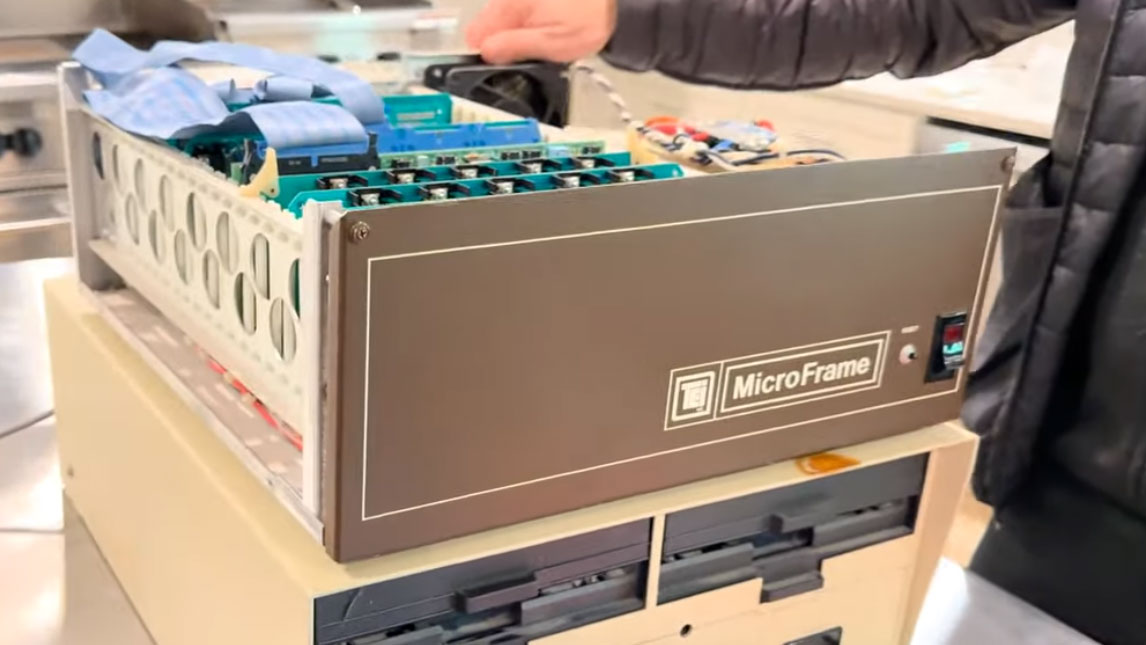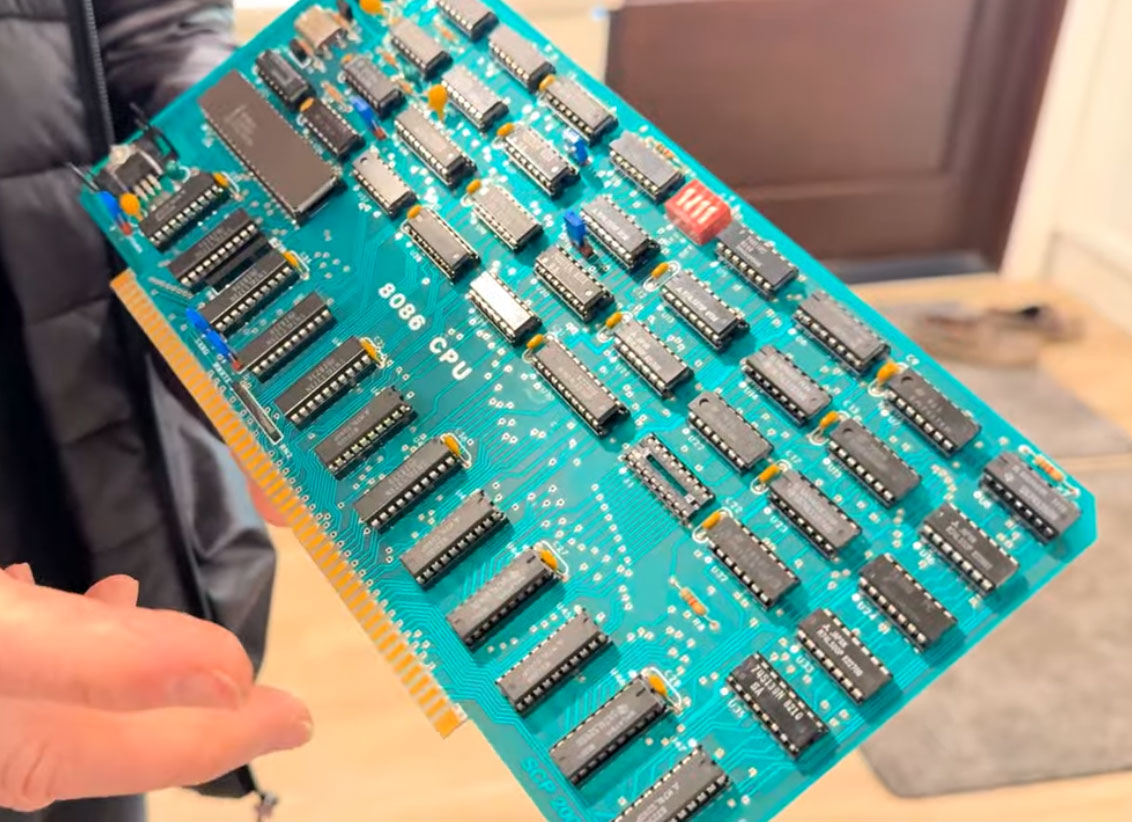
This weekend, a video podcast showcased the MicroFrame computer used to demo QDOS to Bill Gates. Key players from Seattle Computer Products were interviewed about creating the first DOS and how it became MS-DOS on IBM PCs, which sparked Microsoft's rapid growth and prosperity. Moreover, viewers can see the S-100 Intel 8086 PCB removed from the MicroFrame.
In Unaligned 38: the creator of DOS, embedded above, host Robert Scoble chatted with Tim Paterson and Jim Harding, who worked at Seattle Computer Products together in the early 80s. They worked in the roles of Design Engineer and Sales Engineer, respectively. Scoble also has an illustrious tech history and is probably best known for duties as Microsoft's technology Evangelist in the early 2000s (during the Windows XP era).
An interview with Paterson dominates the first segment of the video. His role in the MS-DOS story is pivotal as he wrote the operating system 86-DOS, which was sometimes referred to as QDOS (Quick and Dirty Operating System). Another important feather in Paterson's cap is that he designed the S-100 board, creating one of the first Intel 8086 computer systems. Of course, this was before the IBM PC era (the first IBM PC, with 8088 CPU, arrived in August 1981).
According to Paterson, IBM approached Microsoft to prepare software products to launch the first PC. Microsoft was happy to prepare programming languages for IBM but suggested the firm seek out Digital Research (the makers of the already popular CP/M) for its OS.
Scoble takes over the story at this point and asserts that Gary Kildall (Digital Research founder and CP/M creator) wouldn't accept IBM's volume OS licensing price of $25 per machine. For example, the podcast participants thought CP/M cost one or two hundred dollars. In addition to the monetary issue, there was wrangling over NDAs and problems with missed meeting(s).
Frustrated with Digital Research, Paterson said that IBM went to Microsoft for an OS. In stark contrast with Digital Research, Microsoft would readily sign any piece of paper to seal the IBM deal, suggests the QDOS author. It is fascinating to hear slightly new angles on this legendary foundational deal that led Microsoft to become the colossus it is today.

The old S-100 hardware appears to be in great shape
If you skip ahead in the video to around the one-hour mark, you can see Jim Harding showing off a MicroFrame system that was thought to be the model used by Seattle Computer Products to demonstrate QDOS to Bill Gates. The MicroFrame shown belonged to Tim Paterson's brother.
Harding pulls out an S-100 card from the MicroFrame and tells the host that it houses an Intel 8086, which packs 29,000 transistors. He also praises ex-colleague Paterson's assembly programming skills for squeezing every last bit of performance from the computing power of the day.
Last year, an original 5.25-inch floppy release of version 0.1 C of 86-DOS from Seattle Computer Products was imaged and shared on the Internet Archive. If the above story has inspired you to check out this ancient DOS, you can test it using the disk image and an emulator. Alternatively, you can sit back and watch someone else demo the MS-DOS ancestor on YouTube.







